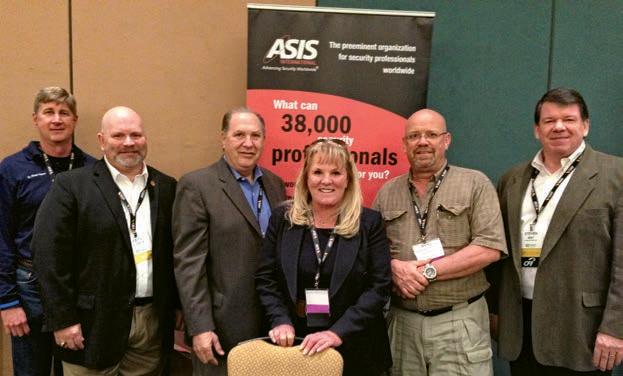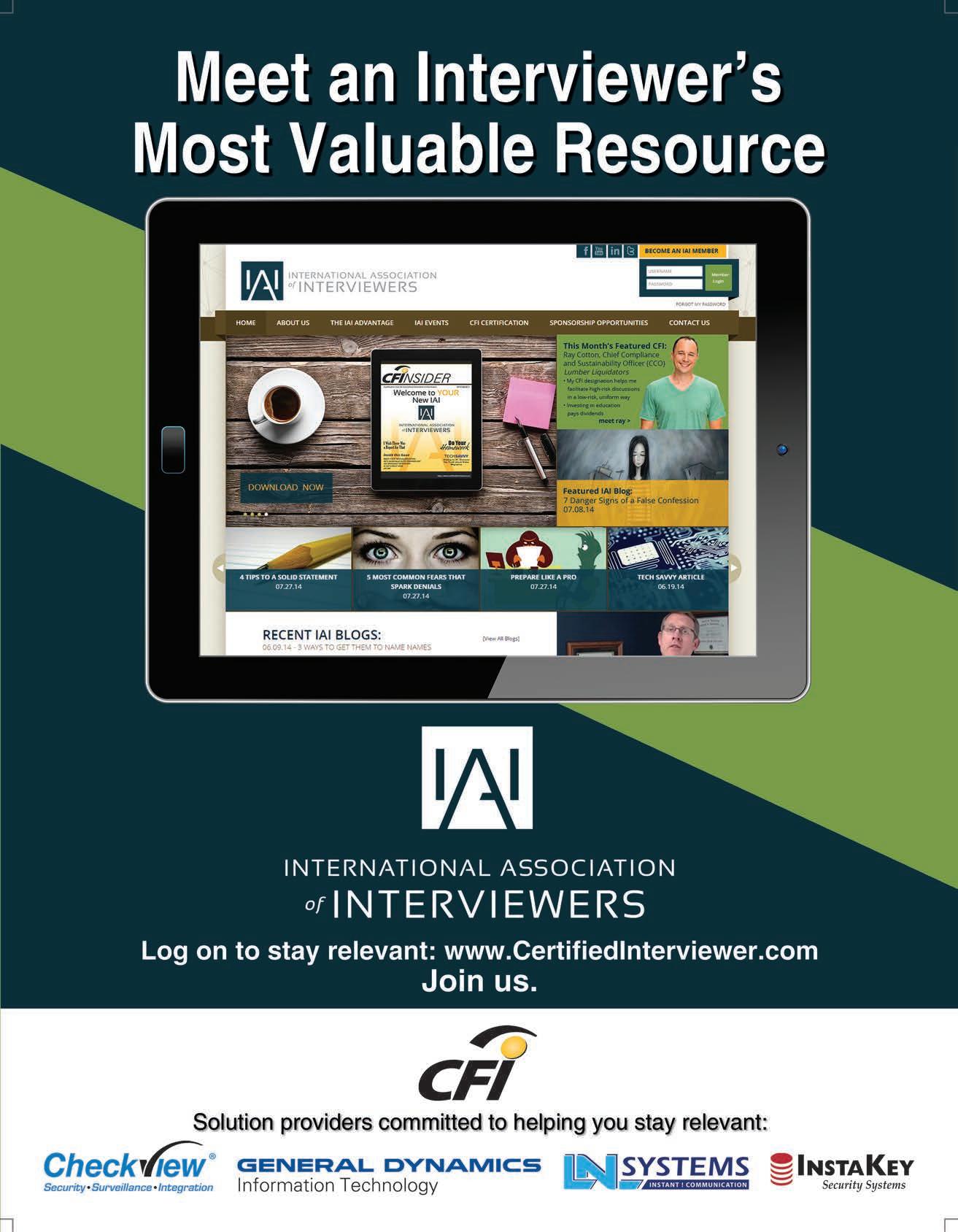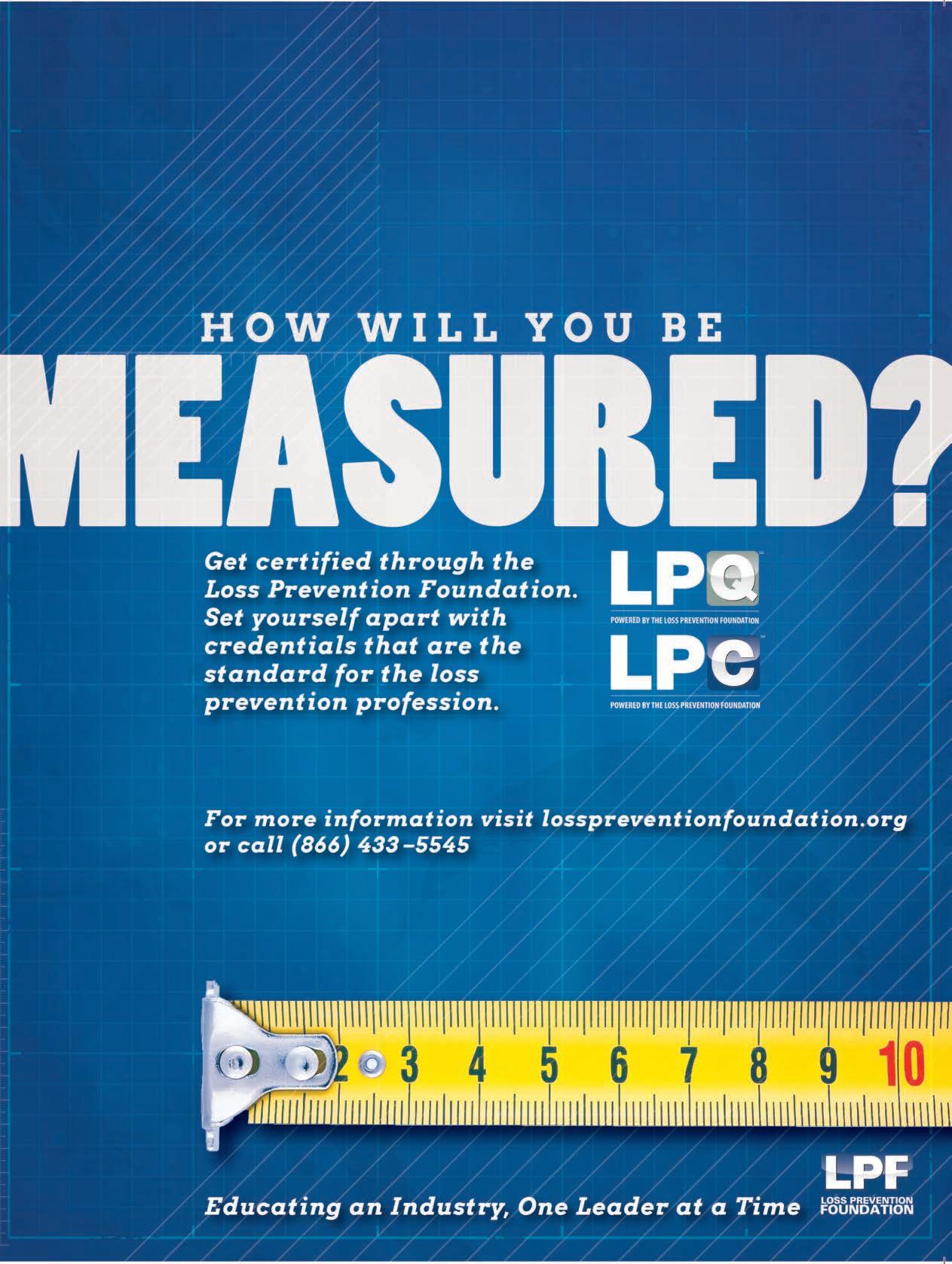
9 minute read
ASSOCIATIONS IN ACTION
By Keith Aubele, CPP, LPP
Aubele is chair of the ASIS International Retail Loss Prevention Council. For the past twelve years, he has served as president and CEO of the Retail Loss Prevention Group (RLPG) based in Bentonville, Arkansas, providing senior advisory to leading retailers and select solution providers along the retail vertical. Aubele’s retail career began with Walmart Stores culminating as director of LP. While at Walmart he was field promoted by founder Sam Walton and was one of three executives to develop the very successful Walmart Neighborhood Market concept. He then became the global VP of LP for The Home Depot. While there his team took shrink to the lowest in company history and added over 600 million dollars to the bottom line through critical process change. He holds a master’s degree in business from Troy University, a BS in criminology from Missouri Southern State University, and is a six-year veteran of the U.S. Air Force.
Based in Alexandria, Virginia, ASIS International is the preeminent global organization for security professionals. It is a mission that takes thousands of volunteers to execute while developing critical security processes, providing professional education and career development, and serving as both a voice and a resource to those in the field of professional security.
In existence since 1955, ASIS International is a proud organization with a clear and concise mission statement: “Be the recognized leader, advancing security worldwide and promoting excellence and leadership in the security management profession.”
I am a member of ASIS International and have been for several years. I also hold the Certified Protection Professional (CPP) designate from the organization. As a long-tenured retail loss prevention executive with both Walmart and The Home Depot, my security education and network expanded exponentially once I was introduced to ASIS and its expansive membership. I also rely on my ASIS International peers to assist me whenever I have specific challenges, needs, or security questions, or to provide solutions and/or resources to solve the problem.
ASIS Council Platform
An interesting component of ASIS is their investment into the council platform. Because there are so many varied security dynamics, ASIS has developed twenty-nine distinct and unique councils to address each and every security practice in place today. Ranging from defence and intelligence to fire and life safety, pharmaceutical security, supply chain and transportation, utilities security, military and law enforcement to school services security, the councils are made up of top-performing professionals in each of these security fields and are dedicated to furthering the practice and the profession.
I have served as the chairman of the Retail Loss Prevention Council for the past two years, surrounded by some of the most talented retail loss prevention and asset protection leaders in the world. Our council membership is constructed of twenty-five members, fifteen of which represent retail companies. One member is a well-recognized research scientist in the field of retail loss prevention. Another represents law enforcement in the area of organized retail crime (ORC). And the remaining members represent various support functions for retail security and asset protection. It is literally a “Who’s Who” of retail leadership.
The significance of the council is our focus on making an impact in the reduction of loss and risk to retailers. We also provide education and tools that are on display at the ASIS annual seminar and exhibits conference, held in the fall of each year. This year ASIS International will celebrate its 60th Annual Seminar and Exhibits between Sept 29th and October 2nd in Atlanta, Georgia. The Retail LP Council will be presenting a session entitled “Critical Issues in
Retail Loss Prevention and Asset Protection.” Essentially it is a panel discussion focused on three critical issues facing retail loss prevention and asset protection today. It is these three issues I would like to discuss further, providing additional insight into what our council and its members focus on and have become proficient at in practice.
ASIS Retail Loss Prevention Council members staffing the council booth at the Food Marketing Institute Asset Protection Conference earlier this year included (left to right) Dr. Read Hayes, Research Scientist, LPRC; Council Chairman Keith Aubele, CPP, LPP; David Levenberg, President, Center Security Services; Kathleen Smith, Vice President of LP, Safeway; Mark Gaudette, CPP, Director of LP, Big Y Grocery; and Steven May, President and CEO, LP Innovations.
Issue 1: Organized Retail Crime
This significant issue continues to cost retailers millions and millions of lost revenue and bottom-line profits. The National Retail Federation estimates that ORC results in more than $30 billion in

continued from page 64 losses for retailers in the U.S. each and every year, and that figure is growing.
ORC is a strategically structured crime organization. At its core is a very efficient series of layered networks, all working in harmony to accomplish one goal—to steal large quantities of merchandise from retailers so that they can be resold or repurposed in exchange for cash, drugs, arms, or other sources of value for the organized crime unit.
The lowest level in the ORC crime syndicate is the booster. Boosters are shoplifters. The term booster originated from a previous time when “booster boxes” were commonly constructed and used by shoplifters as a tool to effectively steal valuable merchandise without detection.
Boosters can be broken down into three categories. The level 1 booster is typically a person who is a drug user that needs to supply his or her habit on a daily basis. These individuals receive on average twenty cents on the dollar for every item they steal. The level 2 booster is working in a team environment and usually travels out in expansive areas crossing state or jurisdictional lines in the process. These boosters usually make twenty-five cents on the dollar for their stolen items. Finally, the third and most dangerous booster is the professional. These individuals spend all of their time stealing, inflicting the most damage to a retailer. Hauling in twenty-five cents or more per item, the professional is king in this illicit industry.
Once the items are stolen, they have to be processed and sold. That is where the fence comes in. The fence represents the retail division of the ORC network. They take the items, clean them of any identifiable traits that may lead back to the original retailer that sold them, and box them for shipment and sale to their customers.
Whether it’s a flea market sales strategy employed by the ORC group or online outlets are used, the group sells the goods to suspecting and unsuspecting customers. Sometimes the ORC group will even set up a brick-and-mortar store and open shop. On other occasions they may utilize a vast distribution network, flooding merchandise out to the masses at discounted prices.
The ASIS Retail Loss Prevention Council works to help educate retailers on ORC activity and eradicate some of the vulnerabilities that exist within retailers today. We also work to bring retailers and their investigative teams together on large scale ORC operations. Kathleen Smith, vice president of loss prevention at Safeway, a large grocery retailer in the United States, is a member of the council and has partnered with companies such as Albertsons, CVS, Rite Aid, Target, Von’s, Walgreens, and Walmart to shut down ORC operations.
Fighting organized retail crime requires an ongoing effort. The council is responsible for keeping up to speed on the latest techniques, processes, vulnerabilities, operations, and movement of major ORC groups. We offer education, assistance, and communication in dealing with this issue.
Issue 2: Technology
While technology has provided many advantages to the retail industry, it has also led to many potential risks. While this may sound like a simple statement, it’s actually rather complex. Cyber theft and crime is in the headlines each and every day as a result of security breaches at retail point-of-sale locations. As well, internal technology tools are available to help retailers impact loss and shrink. The council is always reviewing risk and searching for solutions to mitigate this risk. Let’s highlight a few of the focal points relating to technology.
LP and IT Partnership. There has never been a better time for retail loss prevention professionals to work closely with their company’s information technology (IT) teams. This partnership helps to ensure that each and every tool is in place to secure the internal and external network, and protect against data loss and breach. It is critically important that loss prevention professionals secure access to store data points and POS systems within our brick-and-mortar locations. As has been demonstrated, thieves often corrupt data points by entering a location and downloading or manipulating POS or data tools inside the store. Vigilance is critical to providing a front-line defence for this type of technology breach.
Tools. On the other side of the technology equation is the myriad of technology tools available to retailers that serve to better manage operations, improve shrink performance, and ultimately impact the bottom line in a positive way. The council will often share experiences with these disparate technology tools to offer insight and valuable perspective on how to better deploy technology for greater impact. Navigating the technology jungle is not for the faint at heart. If the wrong solution is deployed it can cost time and money, and we all know that these resources are in very short supply.
Issue 3: Scientifically Qualifying Investments
As retailers, we are constantly at a crossroads in regards to budget, need, risk mitigation, headcount, impact, and priority, just to name a few. How do you process all of this information and make educated decisions on where to spend your resource dollars, how to spend those dollars, and what the intended return on investment (ROI) will be? How do you set up your priority list based on value and impact rather than simply choosing the flavor of the month?
You do it with the support of science. Today’s LP business is no longer a “stick your finger in the air to determine wind direction” profession. We are members of multi-million, and in some instances multi-billion dollar, organizations that are responsible for a division that directly impacts the profitability of these behemoths. That isn’t something you take lightly.
The ASIS International Retail Loss Prevention Council is leading the charge for this change in dynamic. One of our council members and key partners is Dr. Read Hayes, research scientist and director at the University of Florida and leader of the Loss Prevention Research Council (LPRC) based in Gainesville, Florida. The LPRC is a group of retail leaders who take a scientific approach to loss prevention and asset protection solutions and processes. Nothing is left to chance, and their efforts have forged some of the most innovative and successful tools in the industry.
As you can tell, the ASIS International Retail Loss Prevention Council keeps busy focused on a number of initiatives. Our objective is to be a resource in a world needing resources and to be of assistance to those who need us most. For more information on ASIS International, visit asisonline.org







